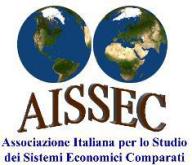Edited by Xieshu Wang and Marta Marson, University of Turin and OEET
With global progress in trade volume, economic activities, technology development and social capital, the general living standards have been improving continuously and many people in less developed zones have come out of extreme poverty. Income inequality between countries has also improved in the last 25 years, but this is mostly due to strong economic growth in China and other emerging economies in Asia. Income inequality within countries instead has become worse. Today, 71% of the world’s population live in countries where inequality has grown. Up to 30% of income inequality is due to inequality within households, and progress in gender equality, for example in the reduction of salary gaps, is uneven across countries and sectors[1].
Inequality is one of the most important subjects of development studies. Economic inequality refers to how economic variables are distributed. Historically, development theory was mostly concerned with growth. Later on, distributional effects were also taken into consideration as it became evident that growth and inequality were closely related. Inclusive growth approaches and redistributional policies were then advocated by development scholars and practitioners to reduce inequality (UNDP, 2013)[2].
Meanwhile, income cannot represent all the well-being of one individual, as the latter also depends on many other factors including climatic conditions, health, education, family status, and even social customs.
The Covid-19 pandemic has evidently aggravated the situation of inequalities in many parts of the world, impacting not only developing but also developed countries. Besides general concerns on public healthcare and economic recovery, other major issues (e.g. the US-China trade war, climate change, technology competition) are also putting great pressure on the global governance, injecting more uncertainty into the future development perspectives. Under this circumstance, it is mostly important for us to take a step back and revaluate the relationship between growth and inequality, to investigate what are the major forces leading to the increasing inequalities of all forms, how and by which means could we rebalance the situation and improve the general living conditions for all. That is why we dedicate this newsletter to the theme of development and inequalities.
Roberto Roson and his co-authors forecast the trends of income distribution in six developing countries, for the period 2011-2050. Through construction of future scenarios and distinguishing 12 household categories and consumption patterns, they found find that long run structural change will widen income inequality in all six developing countries under study. The finding is about functional distribution of income, because change in relative values of different factors (land, capital, labour, natural resources), possessed differently by the households, is identified as a primary determinant.
Marcello Signorelli and his co-authors investigate on the evolution of inequality in a large set of countries during the past two decades, using gross national income per capita (GNI in PPP) and Human Development Index (HDI) as measures of inequality. They classify 5 classes of countries according to their average per capita GNI and normalized HDI scores respectively. They assert that the probability of transitioning form one class to another is small, especially when using HDI as the measurement. This implies that there is a significant inertia of inequality and that more calibrated development policies promoting a higher positive mobility in terms of HDI could help attenuate the rising inequality.
Elena Paglialunga and her co-authors analyse a different aspect of global inequalities, focusing on the impact of climate change on economic disparities within countries reflected in the agriculture sector. Working with an original dataset of over 150 countries covering 2003-2017, they find that the emerging and least developed economies are the most vulnerable to the negative impact of climate change (temperature increase and precipitation anomalies), which greatly worsens the income inequality. Moreover, their findings indicate that other key components of economic openness, namely foreign direct investment (FDI) and lack of diversification of functions within global value chains (GVC), could also influence the within-country inequality. The authors emphasized that climate mitigation policies should not further deteriorate the existing inequality.
[1]https://www.un.org/sites/un2.un.org/files/un75_inequality.pdf
[2]https://www.undp.org/content/dam/undp/library/Poverty%20Reduction/Inclusive%20development/Humanity%20Divided/HumanityDivided_Full-Report.pdf









